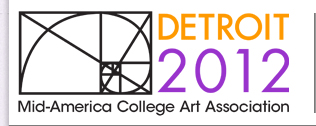Start Date
4-10-2012 8:00 AM
End Date
4-10-2012 9:30 AM
Session Description
What is it about limbs – feet, fingers and arms, ears, noses and toes - that capture imagination across all media? This panel seeks to understand ways in which appendages provoke new thought and representations in current art practice. As implements, design components and conveyers of fantasy and erotic appeal, they serve not only as subject matter, but also as instruments of creative production. From plaster cast to erotic fetish, appendages have long played a role in artists’ vision and viewers’ perception. When removed (physically or contextually) from the body, they constitute dynamic components in the theater of human complexity. Expanding to the non-human realm, a fin, a fang, a claw or tentacle immediately calls up frightening fantasy.
By way of example, consider images of feet. One has only to view the tortured beauty of Géricault’s “Study of Feet and Hands,” the religious associations of “Christ Washing the Feet of the Apostles” (Durer, Tintoretto), or the pastoral bronze, “Boy with Thorn,” to recognize the poignancy of feet as source imagery. The “foot” is delivered as design element in furniture or vessels, both decorative and for structural support. A broader conjecture of foot is revealed as emblem of freedom as the constraint of movement is a primary obstacle to liberation – think “Freedom Walk.”
This panel seeks projects, exhibitions or writings relating to walking, dancing, kicking, stomping, grabbing, poking, clutching, grasping and reaching – in short, the actions or symbolism of all things that stick out from the body! Its significance lies in our universal fascination with truncated body parts and the provocative way artists reinvent them.
What social constructs are identified through the use of images of appendages?
How are roles of class and gender played out through design or decoration?
In which ways do shoes and other coverings emerge as signs of identity?
How do footprints or other markers connote memory?
How do innovations in prosthetic devices and artificial limbs alter our sense of the real and the (im)possible?
Strange Movements: The Art of Appendages in Contemporary Practice
What is it about limbs – feet, fingers and arms, ears, noses and toes - that capture imagination across all media? This panel seeks to understand ways in which appendages provoke new thought and representations in current art practice. As implements, design components and conveyers of fantasy and erotic appeal, they serve not only as subject matter, but also as instruments of creative production. From plaster cast to erotic fetish, appendages have long played a role in artists’ vision and viewers’ perception. When removed (physically or contextually) from the body, they constitute dynamic components in the theater of human complexity. Expanding to the non-human realm, a fin, a fang, a claw or tentacle immediately calls up frightening fantasy.
By way of example, consider images of feet. One has only to view the tortured beauty of Géricault’s “Study of Feet and Hands,” the religious associations of “Christ Washing the Feet of the Apostles” (Durer, Tintoretto), or the pastoral bronze, “Boy with Thorn,” to recognize the poignancy of feet as source imagery. The “foot” is delivered as design element in furniture or vessels, both decorative and for structural support. A broader conjecture of foot is revealed as emblem of freedom as the constraint of movement is a primary obstacle to liberation – think “Freedom Walk.”
This panel seeks projects, exhibitions or writings relating to walking, dancing, kicking, stomping, grabbing, poking, clutching, grasping and reaching – in short, the actions or symbolism of all things that stick out from the body! Its significance lies in our universal fascination with truncated body parts and the provocative way artists reinvent them.
What social constructs are identified through the use of images of appendages?
How are roles of class and gender played out through design or decoration?
In which ways do shoes and other coverings emerge as signs of identity?
How do footprints or other markers connote memory?
How do innovations in prosthetic devices and artificial limbs alter our sense of the real and the (im)possible?


Related Paper(s)
Funk, Tiffany. The Prosthetic Aesthetic: An Art of Anxious Extensions (http://digitalcommons.wayne.edu/macaa2012scholarship/1).
Ruff, Georgina. From Playground to Fetish: The Identity of (the) Mary Jane (http://digitalcommons.wayne.edu/macaa2012scholarship/2).